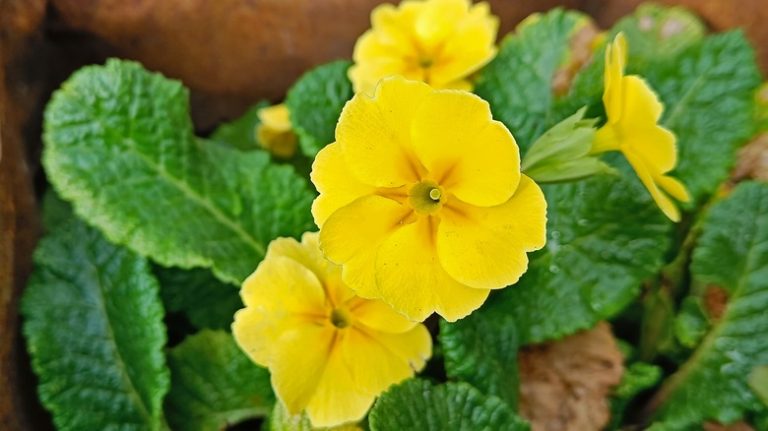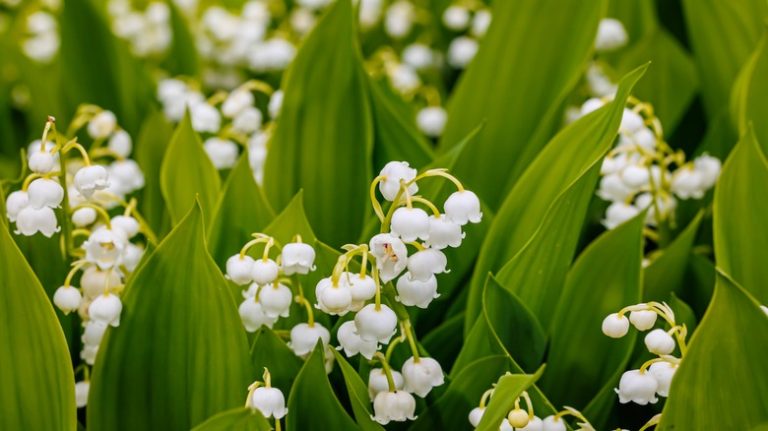If you are looking for a compact and common plant that is great for outdoor areas, consider the New Guinea Impatiens. This plant is known for its large and vibrant flowers, which come in a wide range of colors, including pink, red, orange, and white. Due to its popularity, there is a lot of information available for growers on how to care for these plants.
One of the first things you need to know about New Guinea Impatiens is that they require a good amount of moisture. The soil should be kept consistently damp, but not overly saturated. To achieve this, it is recommended to water the plants once a week or whenever the top inch of soil feels dry. Additionally, the plants prefer a high humidity environment, so if you live in a dry climate, you may need to mist the foliage occasionally.
When it comes to light, New Guinea Impatiens prefer bright but indirect light. They can tolerate some direct sun, especially in the morning or late afternoon, but too much sunlight can cause the leaves to wilt and the colors to fade. If you are planning to grow these plants outdoors, it is best to place them in a location that receives morning sun and afternoon shade. In areas with hot summers, they can also be grown in containers or planters and moved to a shadier spot when needed.
New Guinea Impatiens can be propagated from both cuttings and seed. For cuttings, select a healthy stem that is about 4-6 inches long and remove the lower leaves. Place the cutting in a well-draining soil mix and keep it in a warm and humid location. Soon, roots will start to develop, and you can then transplant the cutting into a larger container or directly into the ground.
When it comes to fertilizing, New Guinea Impatiens are not heavy feeders. A balanced water-soluble fertilizer can be used once a month during the growing season. Be sure to follow the package instructions for the proper dilution and application.
New Guinea Impatiens can also be prone to certain pests and diseases, such as aphids and powdery mildew. To prevent these issues, it is important to keep the foliage dry by watering from the base and avoiding overhead watering. If you notice any signs of pests or disease, it is best to treat them promptly with appropriate insecticides or fungicides.
Overall, New Guinea Impatiens are relatively easy to grow and can brighten up any garden or front yard. Their colorful flowers and lush foliage make them a popular choice among gardeners. Whether you are a beginner or an experienced gardener, these care tips will help you keep your New Guinea Impatiens healthy and thriving.
How to Grow and Care for New Guinea Impatiens
New Guinea Impatiens are a popular flowering plant for many gardeners, known for their beautiful and colorful blooms. If you want to successfully grow and care for these plants, here are some tips you should know:
Growing New Guinea Impatiens
New Guinea Impatiens thrive in locations with partial shade or filtered sunlight. They can tolerate some morning sun, but too much direct afternoon sun can scorch their leaves. Plant them in well-drained soil that has been enriched with organic matter. These plants prefer a slightly acidic soil pH between 6.0 and 6.5.
Caring for New Guinea Impatiens
Water your New Guinea Impatiens regularly, especially during dry periods, but avoid overwatering, as this can lead to root rot. Allow the soil to dry slightly between waterings. Mulching around the plants can help retain moisture and suppress weed growth.
Deadhead the spent flowers regularly to encourage continuous blooming. New flowers will quickly fill in where the old ones have been removed. Pruning can also be done to shape the plants or to remove any leggy growth. Pinching the stems will encourage branching, resulting in a fuller and more compact plant.
Propagation and Overwintering
New Guinea Impatiens can be grown from seed, although it is more commonly done through cuttings or potted plants. To cover a large area, plant them in groups to create a mass of colorful blooms. New Guinea Impatiens are not frost-tolerant and should be brought indoors before the first frost if you want to overwinter them. Keep them in a cool, well-lit room and reduce watering during this period.
Pest and Disease Prevention
New Guinea Impatiens are generally resistant to diseases and pests, but they can still be susceptible to some issues. Use preventive measures such as avoiding overwatering and providing good air circulation to prevent fungal diseases like leaf spot. If pests like aphids or spider mites are a concern, neem oil can be used as a natural control method.
Conclusion
New Guinea Impatiens are a quick and easy flower to grow, with their long-lasting blooms and beautiful colors. By following these tips, you can help ensure the success of your New Guinea Impatiens in your garden.
New Guinea Impatiens Care
Caring for New Guinea Impatiens is relatively easy, but there are a few key tips to keep in mind to ensure their success in your garden.
Selection: When choosing New Guinea Impatiens, select healthy plants with green leaves and no signs of disease or insect damage. Look for compact varieties that will fit well in your garden or display.
Placement: New Guinea Impatiens prefer locations with partial shade, particularly in the afternoon when the sun is strongest. They can tolerate some direct sunlight, but too much can cause wilting.
Soil: These plants prefer well-drained soils that are rich in organic matter. Adding compost or other organic materials to the soil before planting can help improve its fertility and drainage.
Watering: New Guinea Impatiens should be watered regularly, aiming to keep the soil evenly moist. Using a soaker or drip irrigation system is recommended to prevent wetting the foliage, which can lead to disease problems.
Fertilizing: New Guinea Impatiens benefit from regular fertilizing, especially when grown in containers. Using a water-soluble fertilizer according to the package instructions can help promote healthy growth and abundant blooms.
Pests and Diseases: While New Guinea Impatiens are generally resistant to many pests and diseases, they can still be susceptible to some common issues. Thrips and aphids are the most common pests, and downy mildew and Phytophthora can be problematic diseases. Regularly inspecting the plants and treating any issues promptly with appropriate methods, such as neem oil or insecticidal soaps, can help prevent and control these problems.
Propagation: New Guinea Impatiens can be easily propagated through stem cuttings. Simply cut a healthy stem just below a node and place it in a sterile rooting medium. Keep the cutting moist until roots begin to form, then transplant it into a pot or directly into the garden.
Pinching: Pinching is an optional step in New Guinea Impatiens care, but it can help promote bushier growth and more abundant flower production. Simply use your fingers or pruning shears to remove the top third of each stem.
Overwintering: New Guinea Impatiens are considered annuals in most areas, but they can be overwintered indoors in a bright, cool location. Before the first frost, bring the plants inside and cut them back, leaving about 4-6 inches of stem. Place them in a location with bright, indirect light and water sparingly. They can be replanted in the garden once the danger of frost has passed in the spring.
By following these care tips, you can enjoy the beauty of New Guinea Impatiens in your garden or containers.
Light
New Guinea Impatiens thrive in bright, indirect light. They prefer a few hours of morning sun, but the harsh afternoon sun can scorch their delicate foliage. If you are growing impatiens indoors, place them near a sunny window with filtered light. If growing them outside, select a location with dappled shade or morning sun and afternoon shade.
It is important to note that not all impatiens varieties have the same light requirements. Some varieties, such as Sunpatiens, can tolerate full sun. However, for most impatiens, it is best to provide them with a balance of sun and shade to avoid leaf burn and dehydration.
One thing to remember is that impatiens are not drought-tolerant plants. They require a consistent amount of water to keep their foliage lush and healthy. Water them regularly, making sure the soil is evenly moist but not waterlogged. Avoid overwatering, as impatiens can be prone to root rot and other fungal diseases.
In hot summer months, impatiens can wilt if they are not kept properly hydrated. To ensure that they receive an adequate amount of moisture, consider using a soaker hose or a drip irrigation system. This will help deliver water directly to the roots without wetting the foliage, which can result in fungal diseases.
If you live in an area with high humidity, be mindful of fungal diseases such as powdery mildew and botrytis. These can affect impatiens and cause spots or mold-like growth on the foliage or petals. To prevent fungal diseases, ensure good air circulation around the plants and avoid overhead watering. If necessary, treat with a fungicide according to the product instructions.
Impatiens are also susceptible to certain pests, such as thrips and aphids. Inspect your plants regularly and take action at the first sign of pests. Neem oil or insecticidal soap can be effective in controlling these pests.
In addition to providing the right amount of light, caring for impatiens involves regular fertilization. Use a balanced fertilizer with a 14-14-14 or 10-10-10 NPK ratio to promote healthy growth and abundant blooms. Follow the instructions on the fertilizer package for the correct dosage and application frequency.
If you are overwintering impatiens, it is important to provide them with the right conditions to survive. Move plants indoors before the first frost and place them in a bright, cool location. Water sparingly and keep the humidity levels low to prevent mold growth. Once the temperature warms up in spring, you can gradually acclimate the impatiens to outdoor conditions and resume normal care.
In conclusion, while impatiens are a common and popular choice among gardeners due to their vibrant colors and ease of care, it is essential to pay attention to their light requirements. Providing the right amount of light and ensuring proper watering and fertilization are key to the health and success of your impatiens plants. By following these care tips, you can enjoy beautiful, blooming impatiens throughout the growing season.



